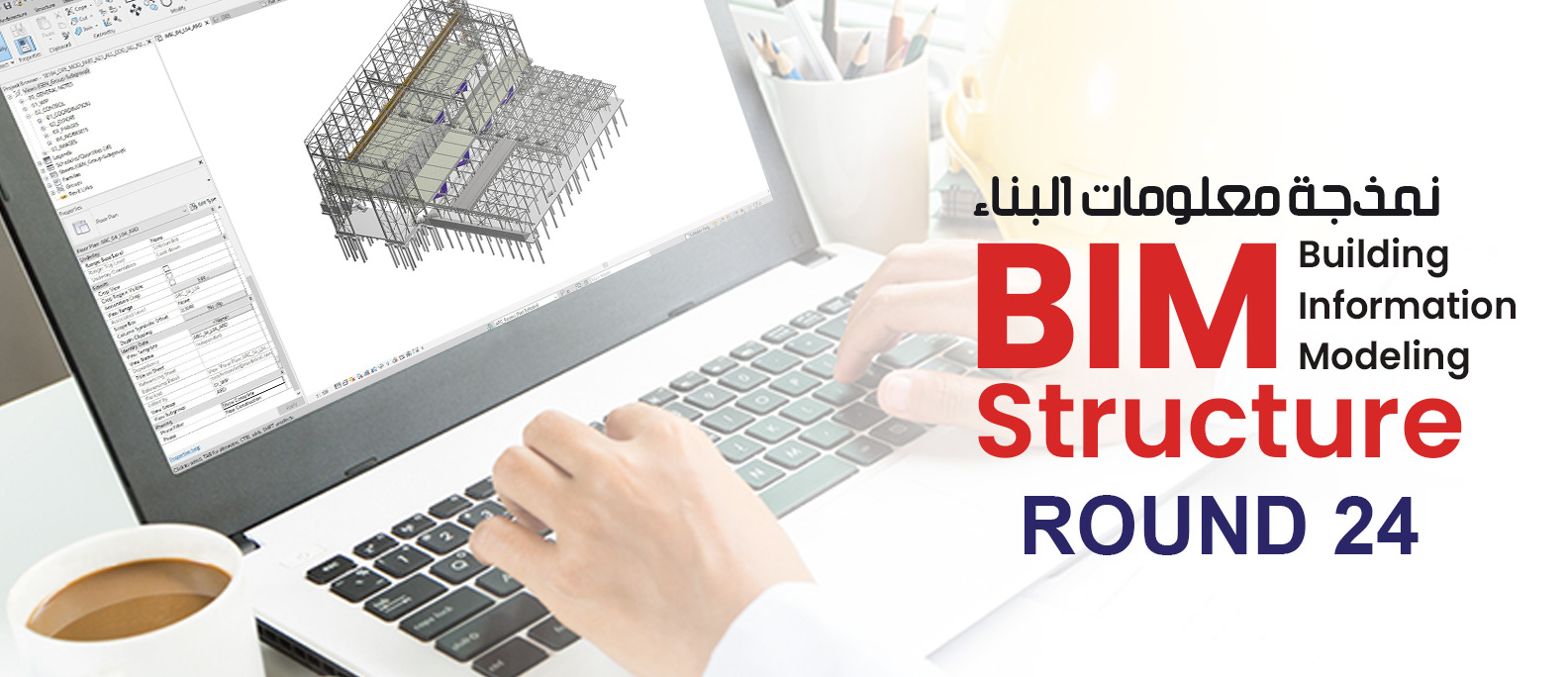BIM
BIM Round #24
Contact Us / EGY : 00201119440005
Contact Us / KSA : 00966569063772
Introduction:-
Building Information Modelling – BIM, allows all parties involved in the project to communicate effectively about coordinating information across different levels. The real concept of BIM is to achieve effectiveness via a collaborative framework, starting from the planning stage for the whole project lifetime passing through deep analysis and potential impacts.
BIM The Upcoming Construction Future:-
The technological boom and the genius of building design and modeling through BIM technology appear in many points, such as using information and data to generate and manage digital models.
Why Use BIM Technology?
- Research and studies say that when you use BIM technology compared to CAD systems, you save 35% of the actual time in implementation.
- Overcomes all design problems through 3D modeling.
- Handling conflicts and clashes between structural and architectural plans.
- Produce inventory and quantities lists for all construction items.
- Provide complete construction data.
- Raising the level and efficiency of design quality.
- No sudden errors appeared during the implementation process.
- Improving cooperation between the different Specialties in the project, such as architecture, construction, mechanics, electricity, and any other Specialties.
Course Structure:-
During …. Hour of professional training, you will be able to understand and master the BIM concepts in order to Save Time, Effort, and Money. We will help you to be prepared for the near future of the construction industry.
-
- Introduction To BIM.
- Using of BIM
- BIM software.
- Difference between AutoCAD & Revit
Revit str. (7 sessions):
Modeling
-
- User interface.
- Project Units.
- Modeling Columns.
- Modeling walls.
- Modeling Foundation (Isolated – Combined – Wall foundation & Raft).
- Modeling Beams.
- Modeling Beam systems.
- Modeling slabs (Flat – solid & Hollow block).
- Modeling voids.
- Manual Reinforcement of different elements.
Editing
-
- Move & copy orders.
- Rotate & array orders.
- Trim / extend orders.
- Cut, copy & paste between different plans.
- Using Filters.
Views
-
- Create plans.
- Create sections.
- Create elevations.
- Control visibility & Graphics
Import from AutoCAD
-
- Difference between Link/import AutoCAD.
- How to import from AutoCAD to Revit.
- Modeling all elements from AutoCAD file.
Annotation
-
- Add different types of Dimensions.
- Add text & Detail lines.
- Add revision clouds.
- Tag different elements
Quantity Survey
-
- Quantity Survey for Columns.
- Quantity Survey for Walls
- Quantity Survey for Foundation / Ground Beams.
- Quantity Survey for Beams.
- Quantity Survey for Slabs.
- Create quantity Survey sheets
- Export sheets to excel.
Families
-
- Concept & techniques for working with families.
- Add / edit family.
- Add reference plans & parameters.
- Create different shapes through families.
- Load Families into project.
Sheets
-
- Create professional sheet.
- Load all sheets sizes.
Reinforcement
-
- Manual Reinforcement for (Columns – Beams – Slabs & Foundation).
- Automatic reinforcement Via extension.
Analytical Model
-
- Edit analytical model.
- Placing loads on Revit
- Export analytical model from Revit to Robot.
Printing
Robot (5 sessions):
Introduction
-
- User interface
- System Configuration (Define material & Codes).
- Link Robot with Revit.
Modeling
-
- Section Definition (Slabs – Beams – columns & walls).
- Modeling of beams.
- Modeling 2D truss.
- Define supports.
- Modeling 3D Building (Slabs – Beams – columns & walls).
- Export from AutoCAD to Robot.
- Create 3D Model from AutoCAD file.
Loads
-
- Define Load types.
- Define Point load
- Define linear load
- Define area load.
- Define Load Combinations.
Analysis
-
- Presentation of Results.
- Setting and modification Tables.
- Alternative way of result presentation.
Design
-
- Design of Beams.
- Design of Columns.
- Design of Slabs.
- Design of Walls.
Preparation of Calculation sheet.

